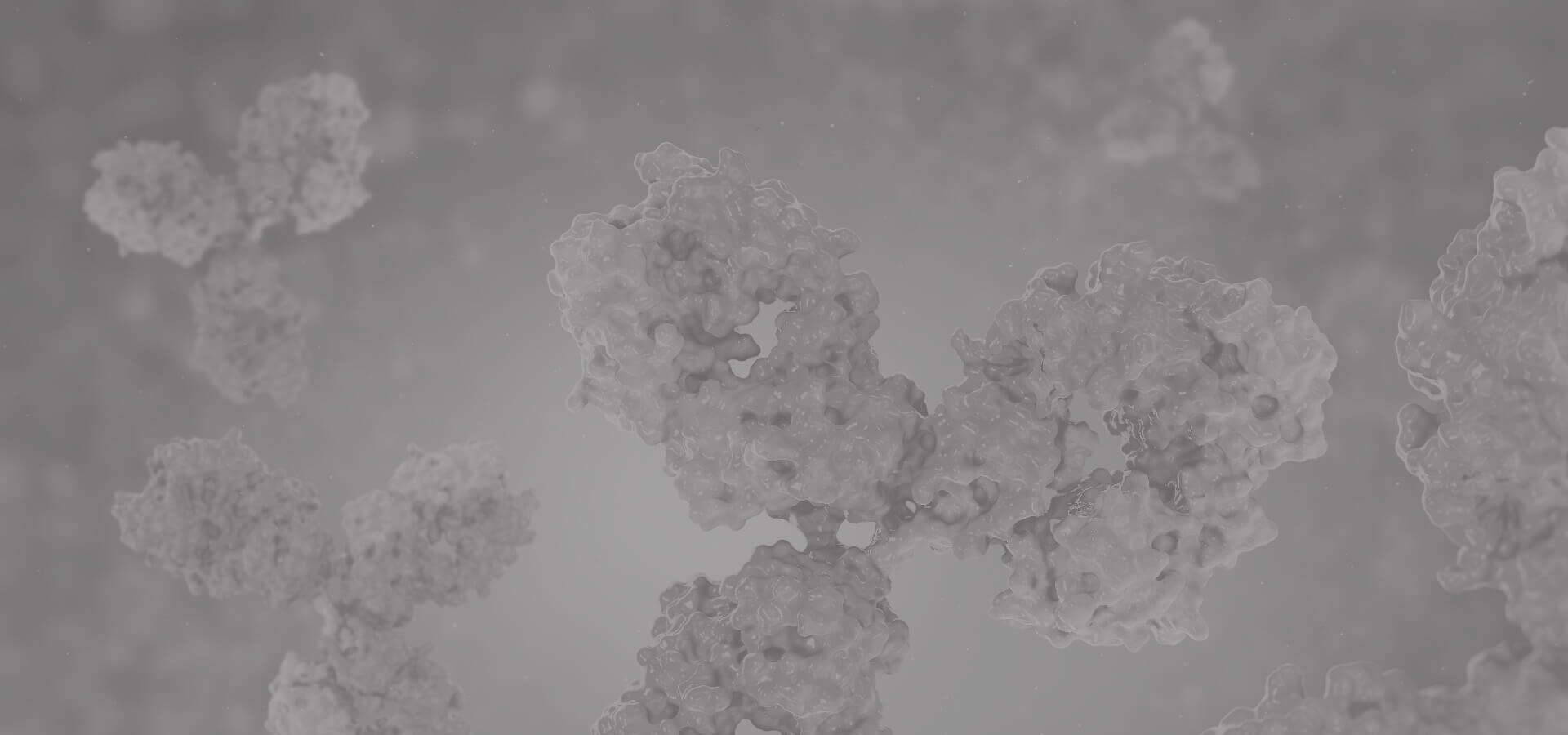GABBR1
This gene encodes a receptor for gamma-aminobutyric acid (GABA), which is the main inhibitory neurotransmitter in the mammalian central nervous system. This receptor functions as a heterodimer with GABA(B) receptor 2. Defects in this gene may underlie brain disorders such as schizophrenia and epilepsy. Alternative splicing generates multiple transcript variants, but the full-length nature of some of these variants has not been determined.
Full Name
gamma-aminobutyric acid type B receptor subunit 1
Function
Component of a heterodimeric G-protein coupled receptor for GABA, formed by GABBR1 and GABBR2 (PubMed:9872316, PubMed:9872744, PubMed:15617512, PubMed:18165688, PubMed:22660477, PubMed:24305054).
Within the heterodimeric GABA receptor, only GABBR1 seems to bind agonists, while GABBR2 mediates coupling to G proteins (PubMed:18165688).
Ligand binding causes a conformation change that triggers signaling via guanine nucleotide-binding proteins (G proteins) and modulates the activity of down-stream effectors, such as adenylate cyclase (PubMed:10906333, PubMed:10773016, PubMed:10075644, PubMed:9872744, PubMed:24305054).
Signaling inhibits adenylate cyclase, stimulates phospholipase A2, activates potassium channels, inactivates voltage-dependent calcium-channels and modulates inositol phospholipid hydrolysis (PubMed:10075644).
Calcium is required for high affinity binding to GABA (By similarity).
Plays a critical role in the fine-tuning of inhibitory synaptic transmission (PubMed:9844003).
Pre-synaptic GABA receptor inhibits neurotransmitter release by down-regulating high-voltage activated calcium channels, whereas postsynaptic GABA receptor decreases neuronal excitability by activating a prominent inwardly rectifying potassium (Kir) conductance that underlies the late inhibitory postsynaptic potentials (PubMed:9844003, PubMed:9872316, PubMed:10075644, PubMed:9872744, PubMed:22660477).
Not only implicated in synaptic inhibition but also in hippocampal long-term potentiation, slow wave sleep, muscle relaxation and antinociception (Probable). Activated by (-)-baclofen, cgp27492 and blocked by phaclofen (PubMed:9844003, PubMed:9872316, PubMed:24305054).
Isoform 1E may regulate the formation of functional GABBR1/GABBR2 heterodimers by competing for GABBR2 binding. This could explain the observation that certain small molecule ligands exhibit differential affinity for central versus peripheral sites.
Within the heterodimeric GABA receptor, only GABBR1 seems to bind agonists, while GABBR2 mediates coupling to G proteins (PubMed:18165688).
Ligand binding causes a conformation change that triggers signaling via guanine nucleotide-binding proteins (G proteins) and modulates the activity of down-stream effectors, such as adenylate cyclase (PubMed:10906333, PubMed:10773016, PubMed:10075644, PubMed:9872744, PubMed:24305054).
Signaling inhibits adenylate cyclase, stimulates phospholipase A2, activates potassium channels, inactivates voltage-dependent calcium-channels and modulates inositol phospholipid hydrolysis (PubMed:10075644).
Calcium is required for high affinity binding to GABA (By similarity).
Plays a critical role in the fine-tuning of inhibitory synaptic transmission (PubMed:9844003).
Pre-synaptic GABA receptor inhibits neurotransmitter release by down-regulating high-voltage activated calcium channels, whereas postsynaptic GABA receptor decreases neuronal excitability by activating a prominent inwardly rectifying potassium (Kir) conductance that underlies the late inhibitory postsynaptic potentials (PubMed:9844003, PubMed:9872316, PubMed:10075644, PubMed:9872744, PubMed:22660477).
Not only implicated in synaptic inhibition but also in hippocampal long-term potentiation, slow wave sleep, muscle relaxation and antinociception (Probable). Activated by (-)-baclofen, cgp27492 and blocked by phaclofen (PubMed:9844003, PubMed:9872316, PubMed:24305054).
Isoform 1E may regulate the formation of functional GABBR1/GABBR2 heterodimers by competing for GABBR2 binding. This could explain the observation that certain small molecule ligands exhibit differential affinity for central versus peripheral sites.
Biological Process
Adenylate cyclase-inhibiting G protein-coupled receptor signaling pathway Source: UniProtKB
Gamma-aminobutyric acid signaling pathway Source: UniProtKB
Neuron-glial cell signaling Source: ARUK-UCL
Gamma-aminobutyric acid signaling pathway Source: UniProtKB
Neuron-glial cell signaling Source: ARUK-UCL
Cellular Location
Cell membrane; Postsynaptic cell membrane; Dendrite. Colocalizes with ATF4 in hippocampal neuron dendritic membranes (By similarity). Coexpression of GABBR1 and GABBR2 is required for GABBR1 maturation and transport to the plasma membrane (PubMed:15617512).
Isoform 1E: Secreted
Isoform 1E: Secreted
Topology
Extracellular: 15-591
Helical: 592-612
Cytoplasmic: 613-631
Helical: 632-652
Extracellular: 653-667
Helical: 668-688
Cytoplasmic: 689-710
Helical: 711-731
Extracellular: 732-768
Helical: 769-789
Cytoplasmic: 790-804
Helical: 805-825
Extracellular: 826-833
Helical: 834-854
Cytoplasmic: 855-961
Helical: 592-612
Cytoplasmic: 613-631
Helical: 632-652
Extracellular: 653-667
Helical: 668-688
Cytoplasmic: 689-710
Helical: 711-731
Extracellular: 732-768
Helical: 769-789
Cytoplasmic: 790-804
Helical: 805-825
Extracellular: 826-833
Helical: 834-854
Cytoplasmic: 855-961
View more
Anti-GABBR1 antibodies
+ Filters
 Loading...
Loading...
Target: GABBR1
Host: Rabbit
Antibody Isotype: IgG
Specificity: Human, Mouse, Rat
Clone: EG1272
Application*: WB: 1:500~1:1000 IF: 1:100~1:500 ELISA: 1:1000
Target: GABBR1
Host: Mouse
Antibody Isotype: IgG2a
Specificity: Rat
Clone: CBLG1-426
Application*: IH
Target: GABBR1
Host: Mouse
Antibody Isotype: IgG2a, κ
Specificity: Human
Clone: 2D7
Application*: E, IF, WB
Target: GABBR1
Host: Mouse
Antibody Isotype: IgG1
Specificity: Rat, Human, Mouse
Clone: S93A-49
Application*: WB
Target: GABBR1
Host: Mouse
Antibody Isotype: IgG2a
Specificity: Rat
Clone: 751216
Application*: IH
Target: GABBR1
Host: Mouse
Antibody Isotype: IgG1
Specificity: Human, Mouse, Rat
Clone: CBFYH-2960
Application*: WB, IF
Target: GABBR1
Host: Rabbit
Antibody Isotype: IgG
Specificity: Human, Mouse, Rat
Clone: BA0372
Application*: WB
Target: GABBR1
Host: Mouse
Antibody Isotype: IgG2a, κ
Specificity: Human, Mouse, Rat
Clone: BA0402
Application*: F, IF, IH, C, WB
Target: GABBR1
Host: Mouse
Antibody Isotype: IgG1
Specificity: Human, Mouse, Rat
Clone: S93A-49
Application*: IH, WB
More Infomation
Hot products 
-
Rabbit Anti-AKT2 (Phosphorylated S474) Recombinant Antibody (V2-556130) (PTM-CBMAB-0605LY)

-
Mouse Anti-BrdU Recombinant Antibody (IIB5) (CBMAB-1038CQ)

-
Mouse Anti-ABL2 Recombinant Antibody (V2-179121) (CBMAB-A0364-YC)

-
Mouse Anti-CCL18 Recombinant Antibody (64507) (CBMAB-C7910-LY)

-
Mouse Anti-CD164 Recombinant Antibody (CBFYC-0077) (CBMAB-C0086-FY)

-
Mouse Anti-C5AR1 Recombinant Antibody (R63) (CBMAB-C9553-LY)

-
Mouse Anti-ARID1B Recombinant Antibody (KMN1) (CBMAB-A3546-YC)

-
Rat Anti-CCR2 Recombinant Antibody (475301) (CBMAB-C1338-LY)

-
Mouse Anti-AKT1 (Phosphorylated S473) Recombinant Antibody (V2-505430) (PTM-CBMAB-0067LY)

-
Mouse Anti-BLK Recombinant Antibody (CBYY-0618) (CBMAB-0621-YY)

-
Rat Anti-ABCC11 Recombinant Antibody (V2-179001) (CBMAB-A0236-YC)

-
Mouse Anti-BZLF1 Recombinant Antibody (BZ.1) (CBMAB-AP705LY)

-
Mouse Anti-AQP2 Recombinant Antibody (E-2) (CBMAB-A3358-YC)

-
Rabbit Anti-ALOX5AP Recombinant Antibody (CBXF-1219) (CBMAB-F0750-CQ)

-
Mouse Anti-ADRB2 Recombinant Antibody (V2-180026) (CBMAB-A1420-YC)

-
Mouse Anti-A2M Recombinant Antibody (V2-178822) (CBMAB-A0036-YC)

-
Mouse Anti-BMI1 Recombinant Antibody (CBYC-P026) (CBMAB-P0108-YC)

-
Mouse Anti-AAV9 Recombinant Antibody (V2-634029) (CBMAB-AP023LY)

-
Mouse Anti-BPGM Recombinant Antibody (CBYY-1806) (CBMAB-2155-YY)

-
Mouse Anti-ADGRL2 Recombinant Antibody (V2-58519) (CBMAB-L0166-YJ)

For Research Use Only. Not For Clinical Use.
(P): Predicted
* Abbreviations
- AActivation
- AGAgonist
- APApoptosis
- BBlocking
- BABioassay
- BIBioimaging
- CImmunohistochemistry-Frozen Sections
- CIChromatin Immunoprecipitation
- CTCytotoxicity
- CSCostimulation
- DDepletion
- DBDot Blot
- EELISA
- ECELISA(Cap)
- EDELISA(Det)
- ESELISpot
- EMElectron Microscopy
- FFlow Cytometry
- FNFunction Assay
- GSGel Supershift
- IInhibition
- IAEnzyme Immunoassay
- ICImmunocytochemistry
- IDImmunodiffusion
- IEImmunoelectrophoresis
- IFImmunofluorescence
- IGImmunochromatography
- IHImmunohistochemistry
- IMImmunomicroscopy
- IOImmunoassay
- IPImmunoprecipitation
- ISIntracellular Staining for Flow Cytometry
- LALuminex Assay
- LFLateral Flow Immunoassay
- MMicroarray
- MCMass Cytometry/CyTOF
- MDMeDIP
- MSElectrophoretic Mobility Shift Assay
- NNeutralization
- PImmunohistologyp-Paraffin Sections
- PAPeptide Array
- PEPeptide ELISA
- PLProximity Ligation Assay
- RRadioimmunoassay
- SStimulation
- SESandwich ELISA
- SHIn situ hybridization
- TCTissue Culture
- WBWestern Blot

Online Inquiry







